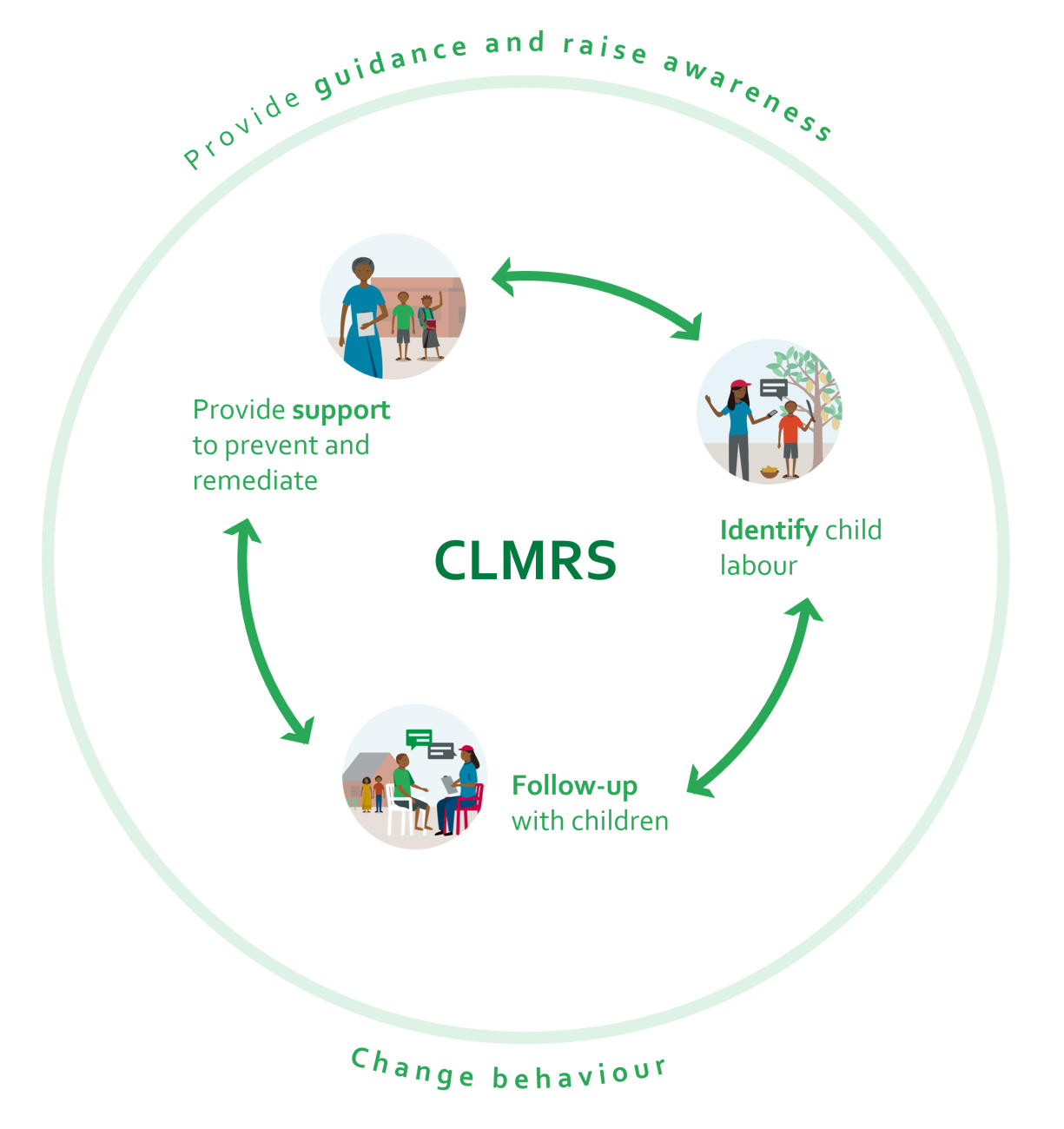Child Labour Monitoring and Remediation Systems (CLMRS) are child-centred support systems. They identify children in, or at risk of, child labour, provide ongoing guidance and support (directly and through referral) to improve their situation and follow children’s progress over time. CLMRS aim to prevent and reduce child labour, mitigate its harmful effects, and ultimately prevent it from being passed down into the next generation.
Today, many cocoa and chocolate companies are using CLMRS as part of their efforts to tackle child labour in supply chains in West Africa and to conduct Human Rights Due Diligence (HRDD). Our Learning into Action: Child Labour Monitoring and Remediation Systems brief and our CLMRS Manual provides recommendations for implementing effective CLMRS based on ICI's experience in cocoa-growing communities in Côte d’Ivoire and Ghana.
How CLMRS work in practice
CLMRS Personnel, sometimes known as monitors, agents or field officers visit households, raise awareness of the dangers of child labour, and identify children in child labour.
If a child is found in, or at risk of, child labour, CLMRS Personnel record it in a database, and support is provided to the child, their household and/or the community. This support aims to encourage households to stop child labour, promote an environment that supports children’s healthy development, and help households manage without resorting to child labour. In parallel, CLMRS Personnel conduct regular follow-up visits to guide households and monitor the situation of children until they are no longer found in or at risk of child labour.

Each of the actions of a CLMRS contributes to guiding and supporting households through the process of behaviour change. They are part of a cyclical and iterative process. Although there is no fixed order in which they must occur, the different CLMRS activities should happen within specific timeframes to ensure the system is effective and to complies with requirements set out in the CLMRS Core Criteria.
These Core Criteria for CLMRS define the minimum standards for system design and implementation, including key metrics, required activities, and essential definitions. They provide the operational definition of a CLMRS and can serve as a benchmarking tool to assess and strengthen CLMRS performance.
How CLMRS tackle child labour
The regular visits of CLMRS personnel to raise awareness with households on the dangers of child labour, and guide and support parents and caregivers to change behaviour, are a key contributor to CLMRS effectiveness. In addition, specific support activities can be provided that can remove barriers to behaviour change, for example:
- Improving access to quality education, for instance through bridging classes or school refurbishment,
- Strengthening household livelihoods, such as through cash transfers,
- Promoting gender equality, for example by supporting adult literacy classes for women.
Our Learning into Action series of briefs provides insights into effective support interventions that can be implemented as part of a CLMRS.
How CLMRS measure when children are out of child labour
Data suggests that if children have stopped doing hazardous tasks for at least two consecutive follow-up visits, they are much less likely to return to child labour again in the future. This is why we look at data from two consecutive follow-up visits to measure whether children are out of child labour.
Data from ICI-implemented CLMRS in Ghana and Côte d’Ivoire show that 44% of children previously in child labour, were no longer in child labour after two consecutive follow-up visits.
Scaling up CLMRS
Together with our members, we are working to expand the use of CLMRS and similar systems to cover 100% of the cocoa supply chain in Côte d'Ivoire and Ghana by 2025. As such systems are scaled up, it is important to ensure they remain as effective as possible. We are continuously working to improve the effectiveness of CLMRS, you can find out more in our CLMRS Manual.
If you are a cocoa trading, processing or manufacturing company and would like to know more about implementing CLMRS in your supply chain, please get in touch.